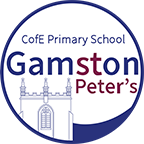Writing
At Gamston St Peter's CofE Primary School, we aim to provide our pupils with a rich and engaging English curriculum. Below is an overview of our English planning sequence, designed to support our pupils' learning and development in writing.
Overview of the Writing Process
Our writing curriculum is structured around four main purposes of writing:
- To entertain
- To inform
- To persuade
- To discuss
When selecting genres for writing, we consider the opportunities presented by the texts we study and the skills that pupils need to develop to succeed.
Phases of the English Planning Sequence
Phase 1: Introduction to the Text
In this phase, we aim to engage pupils with the key texts we will be studying. Here are some activities we might use:
- Explore the Front Cover: Discuss what type of text it is and what it might be about.
- Watch Videos/Trailers: Use multimedia to spark interest.
- Drama Techniques: Engage pupils through role play, freeze frames, and other interactive methods.
- Word Banks: Create a collection of new vocabulary to support writing.
Phase 2: Creation of Exemplars
We use high-quality examples of writing (known as WAGOLLs - What A Good One Looks Like) to model effective writing techniques. This phase includes:
- Analyse Exemplars: Discuss sentence structure, vocabulary, and punctuation.
- Create Success Criteria: Develop clear goals for what makes writing successful.
- Focus on Skills: Identify specific skills that need to be taught, ensuring pupils understand the purpose of different writing features.
Phase 3: Capturing Ideas
Before writing, pupils spend time generating ideas through various activities, such as:
- Oral Rehearsing: Discuss ideas verbally.
- Mind Mapping: Create visual representations of thoughts.
- Story Maps: Outline the structure of their writing.
During this phase, teachers model writing techniques and provide feedback focused on the learning objectives.
Editing and Final Draft
Editing is a crucial part of the writing process. Pupils will:
- Focus on Specific Skills: Edit their work with a clear goal, such as improving vocabulary or sentence structure.
- Produce a Final draft: Create a polished piece of writing that demonstrates the skills they have learned throughout the sequence.
Supporting and Challenging Pupils
To ensure all pupils can succeed, we provide various levels of support and challenge:
Supporting Strategies:
- Modelling: Teachers demonstrate writing techniques.
- Working Walls: Display helpful prompts and vocabulary.
- Scaffolded Examples: Provide structured support for writing tasks.
Challenging Strategies:
- Writing Restrictions: Encourage creativity by limiting word counts or specific vocabulary.
- Editing Exercises: Challenge pupils to improve their work by revising their writing.
Conclusion
Our English planning sequence is designed to inspire and equip pupils with the skills they need to become confident writers. We believe in fostering a love for language and storytelling, encouraging pupils to express themselves creatively and effectively.
If you have any questions about our English curriculum or how to support your child at home, please feel free to reach out to us!
